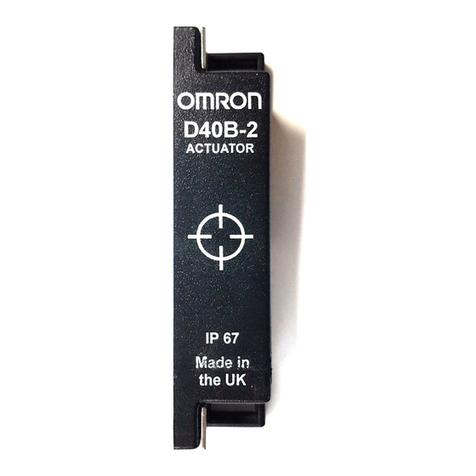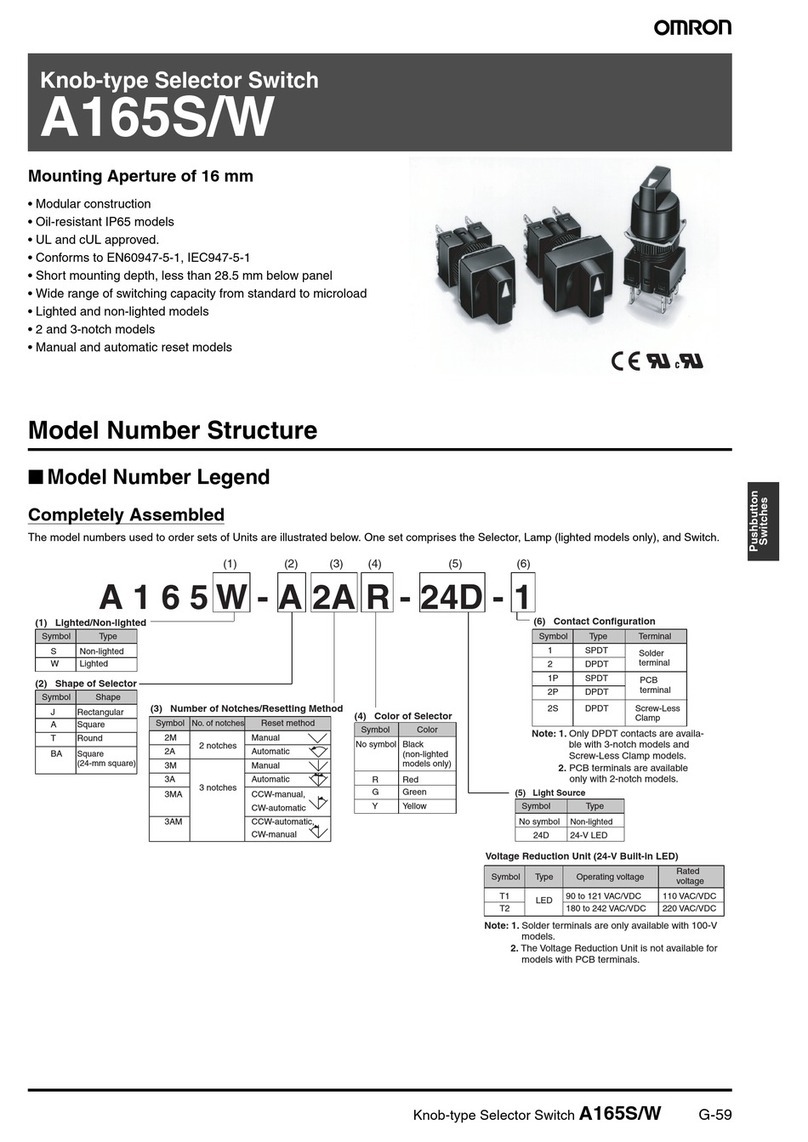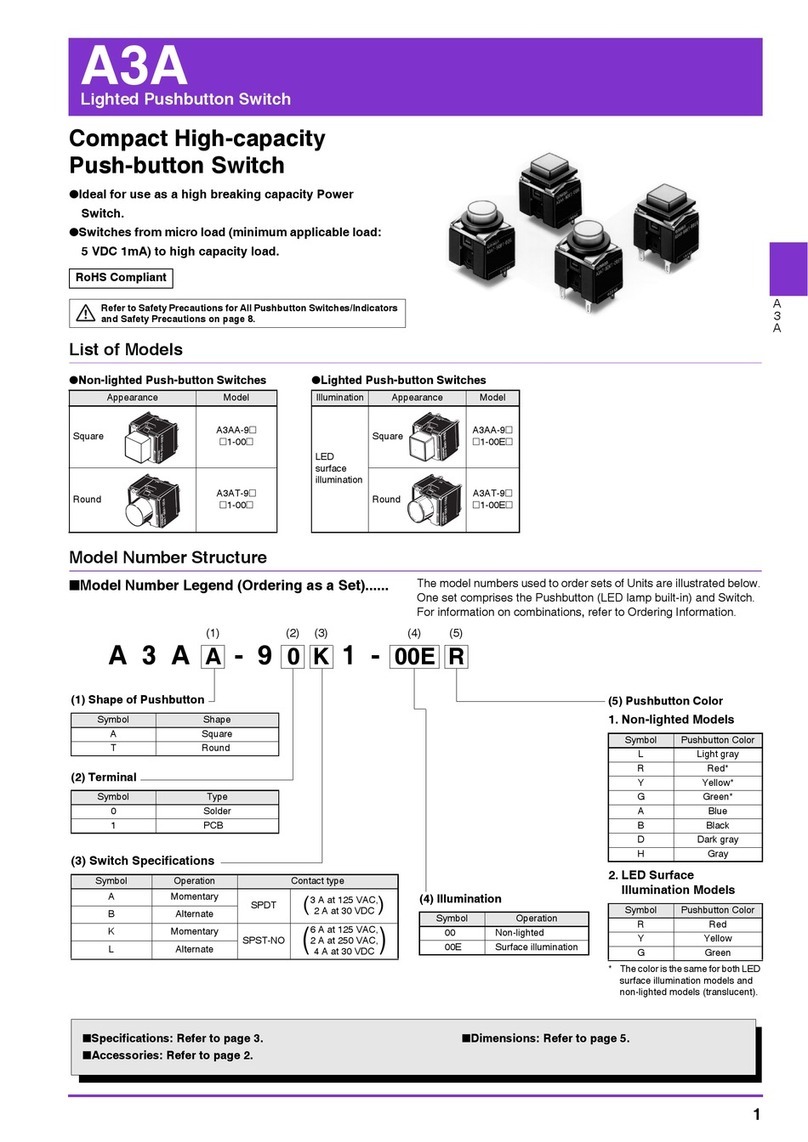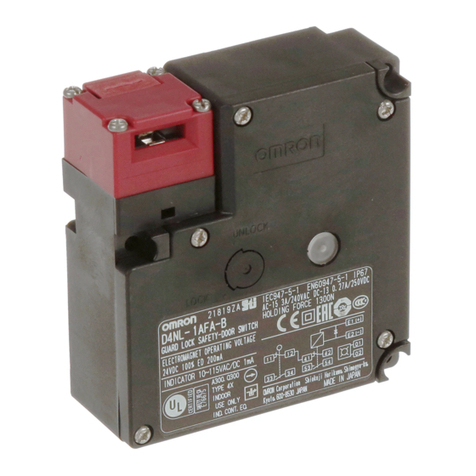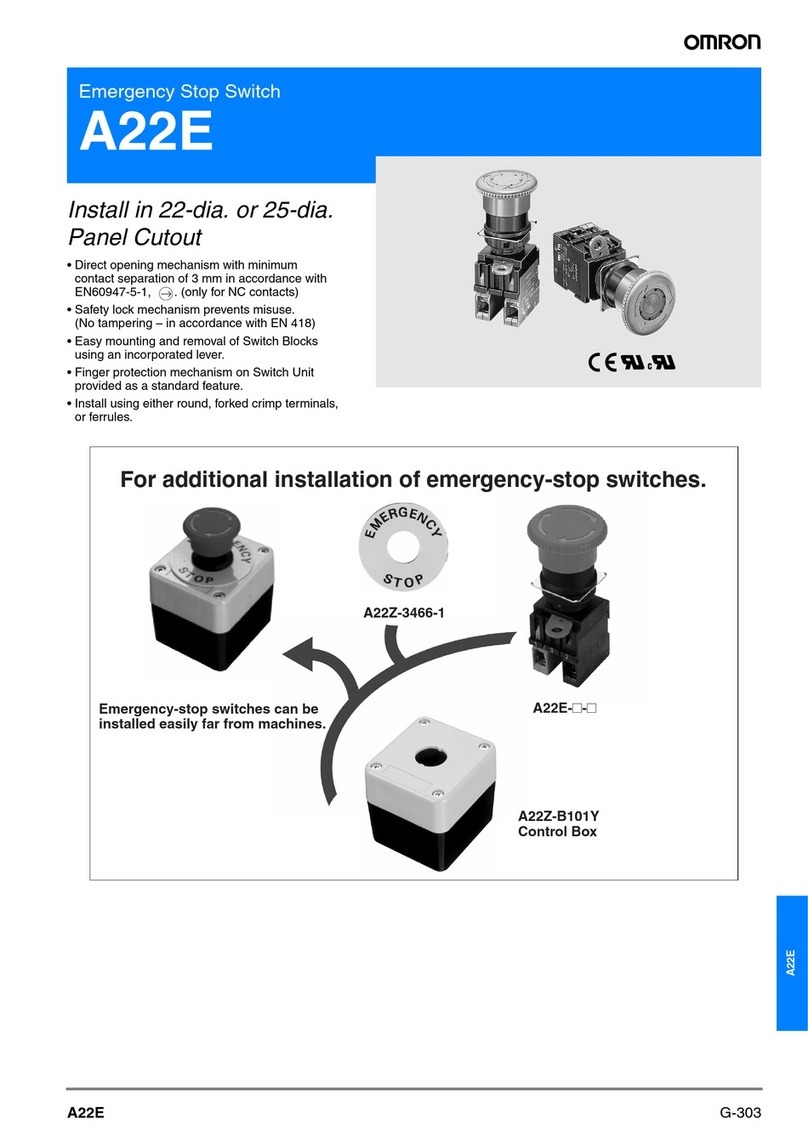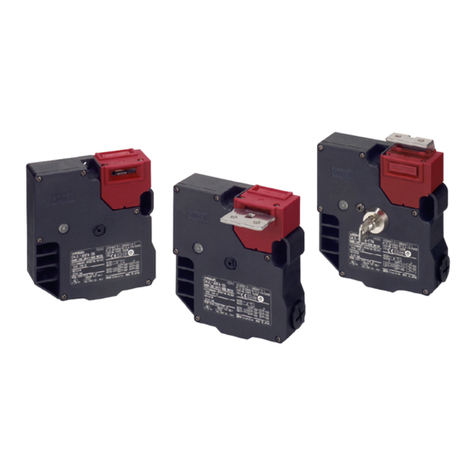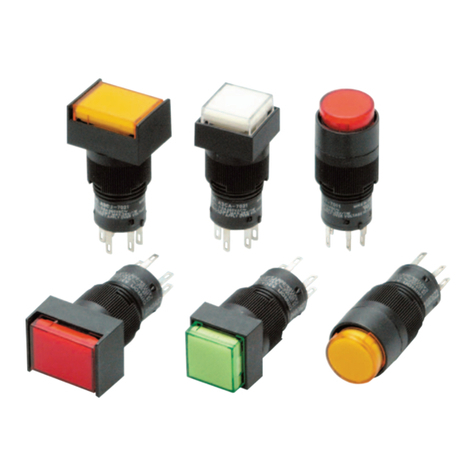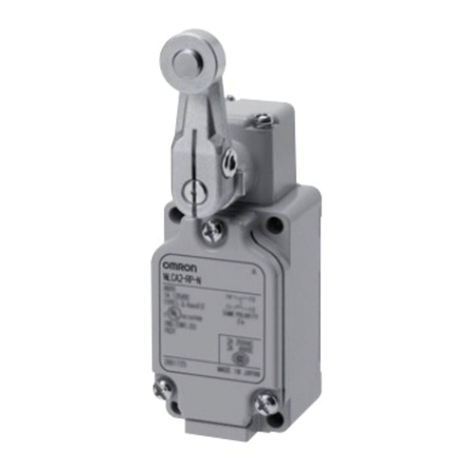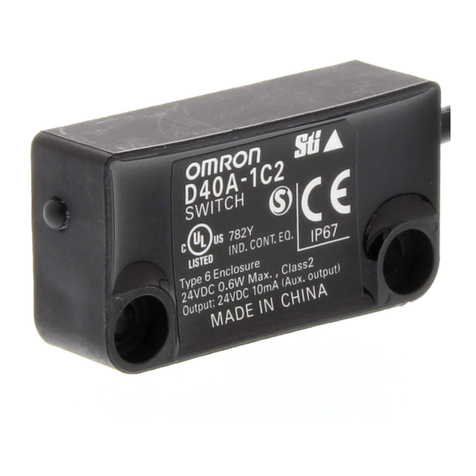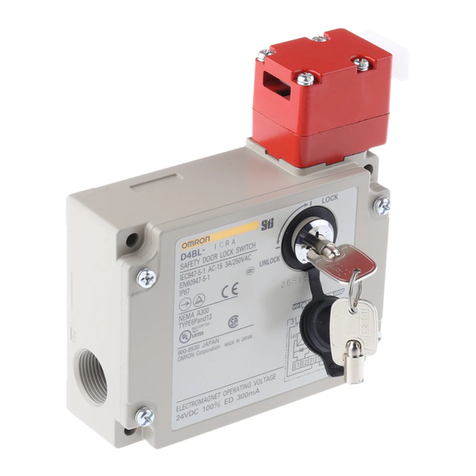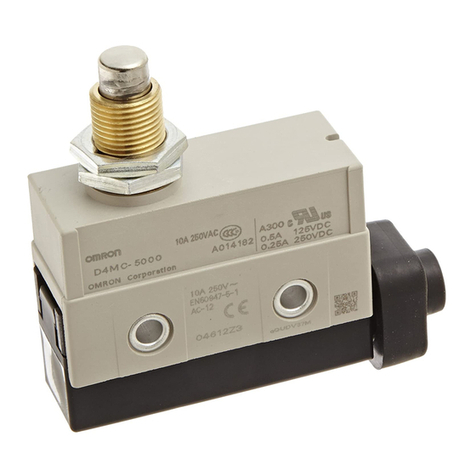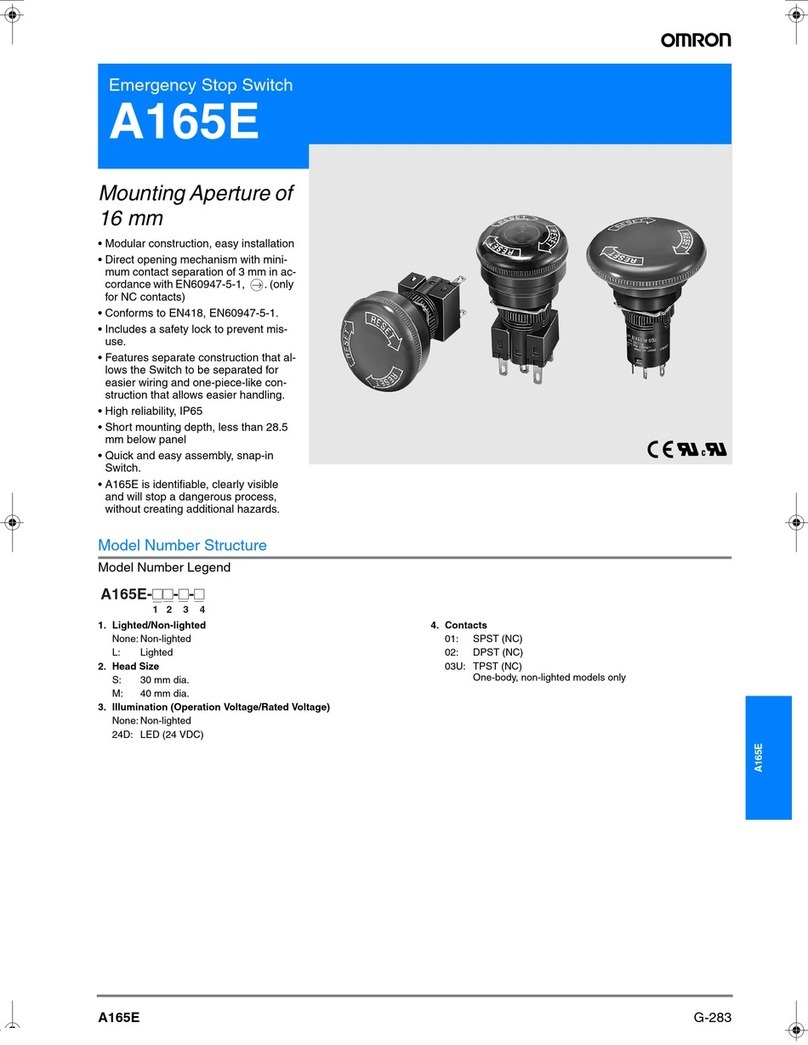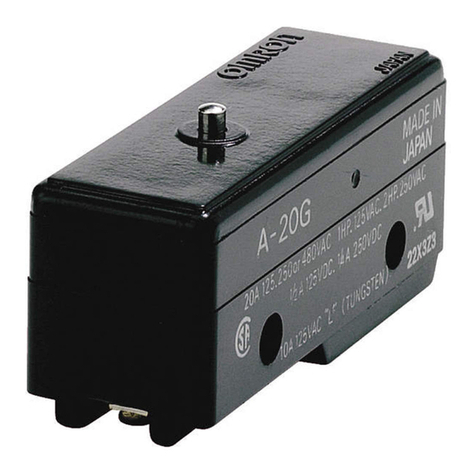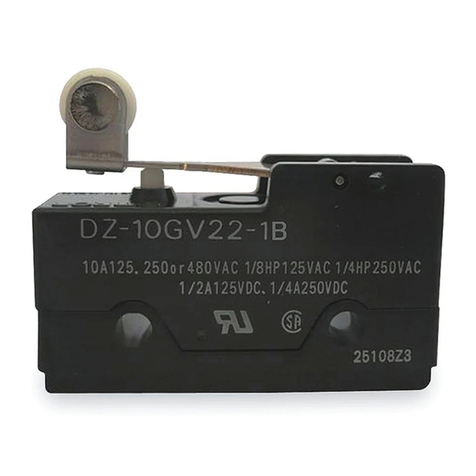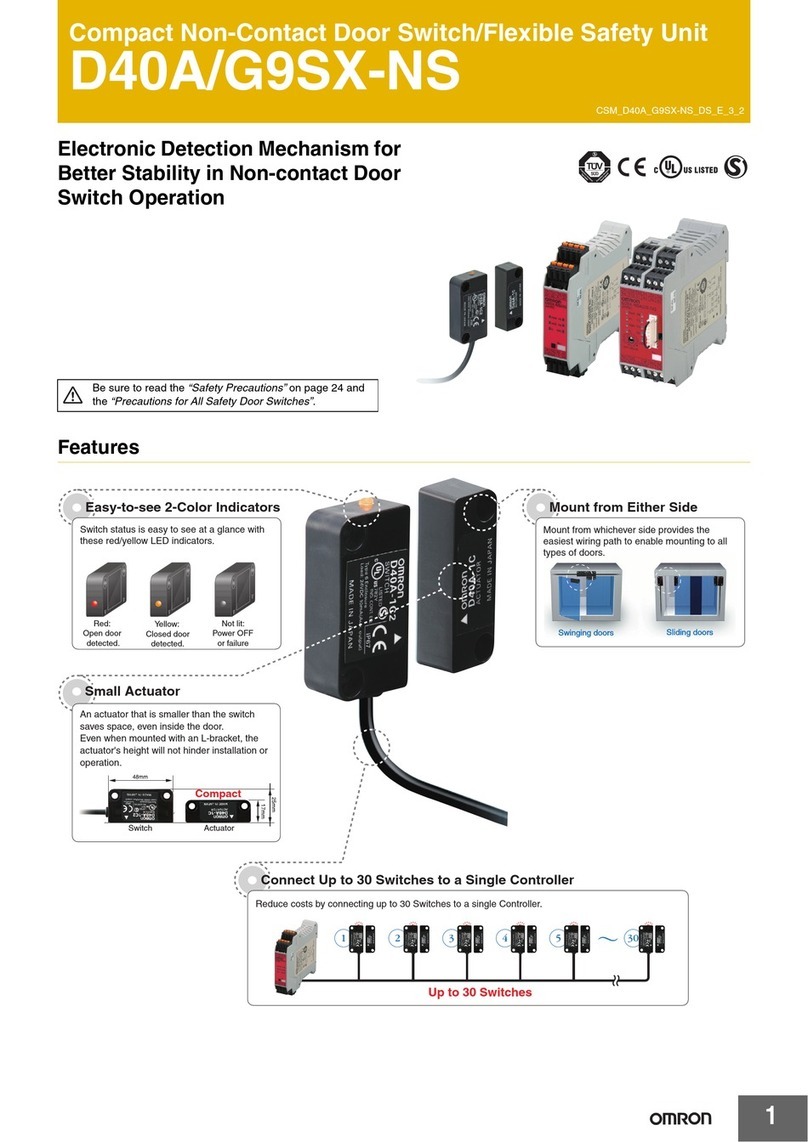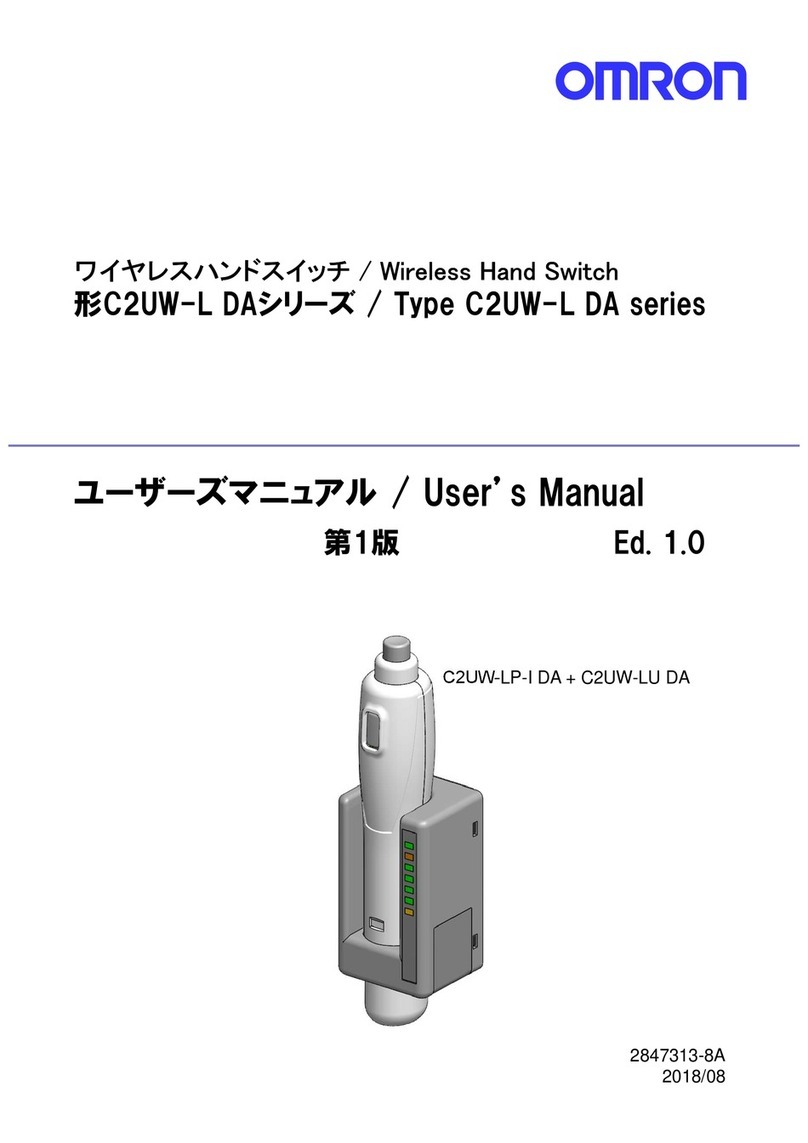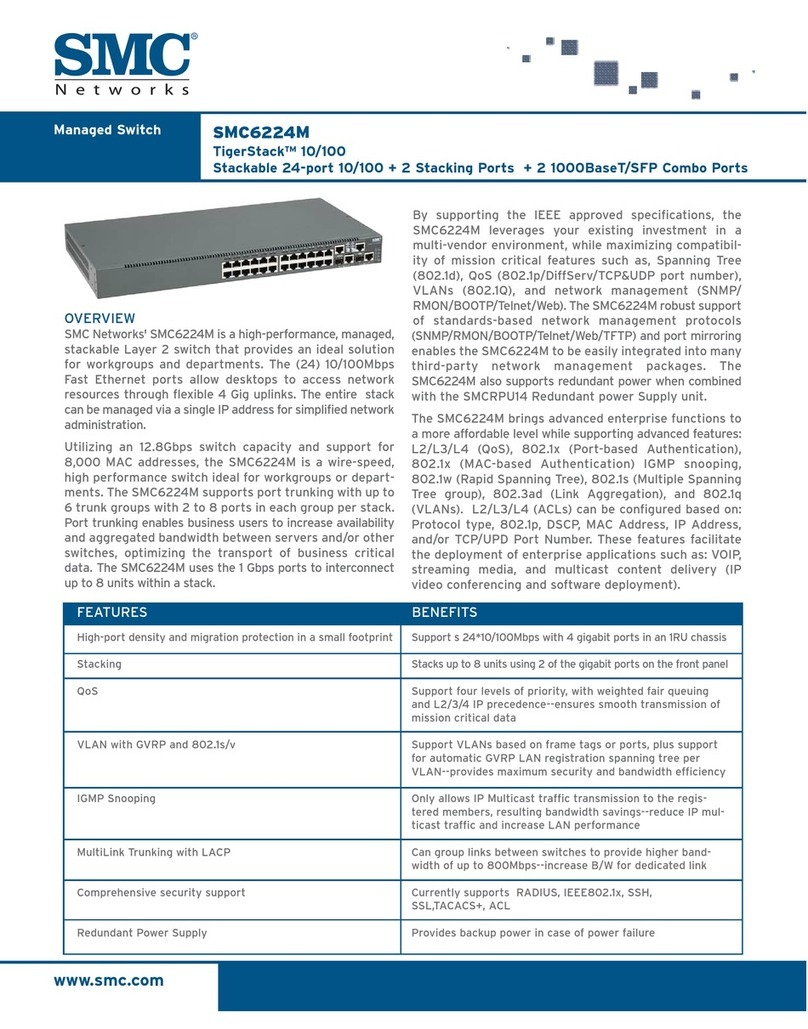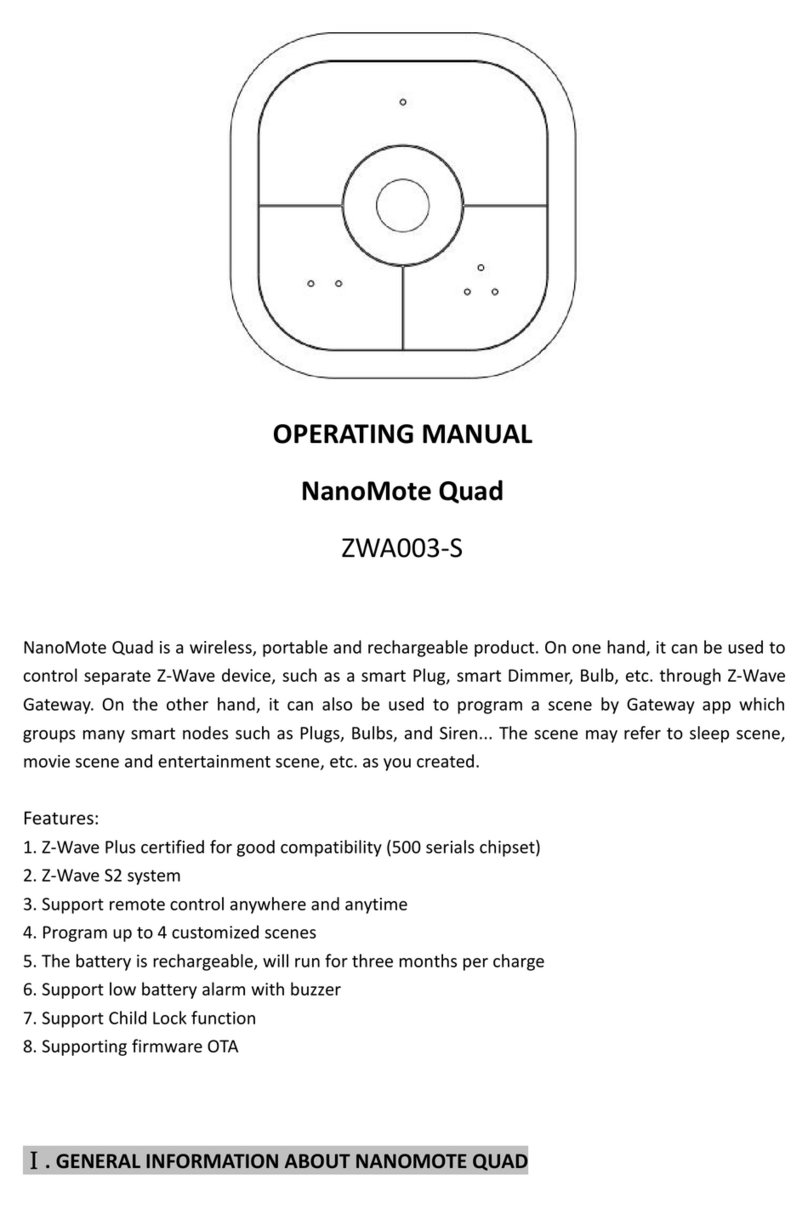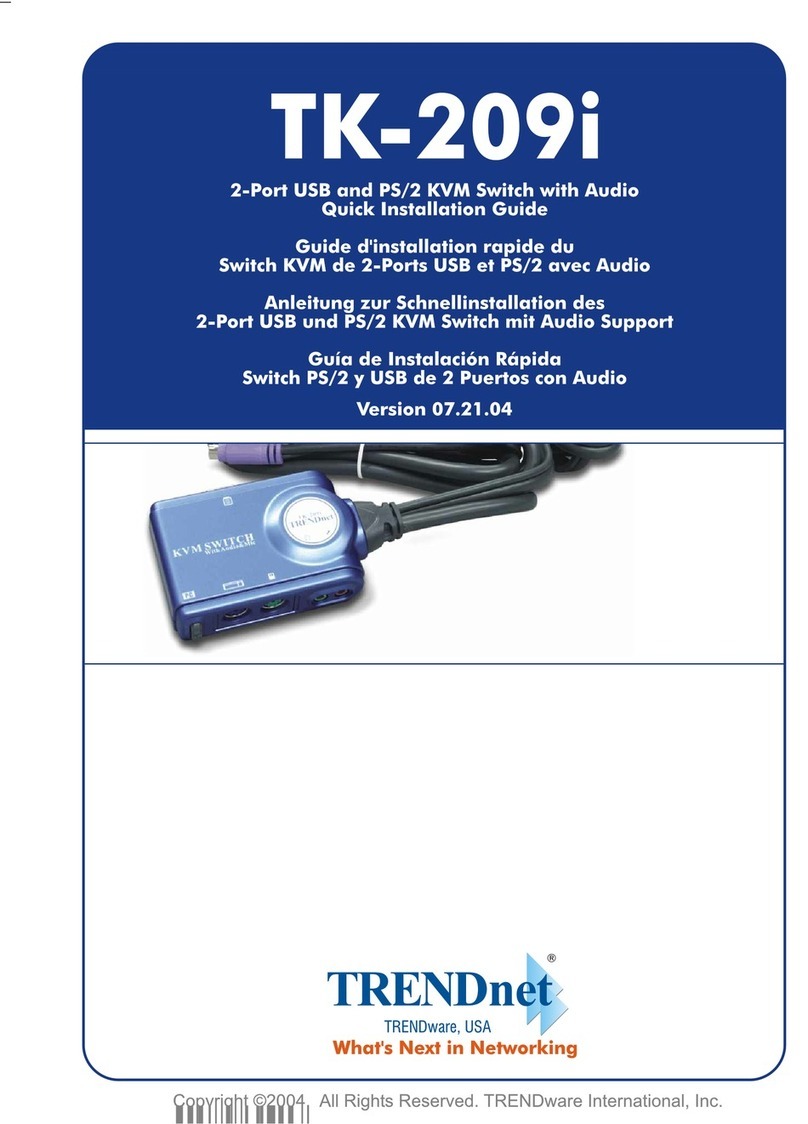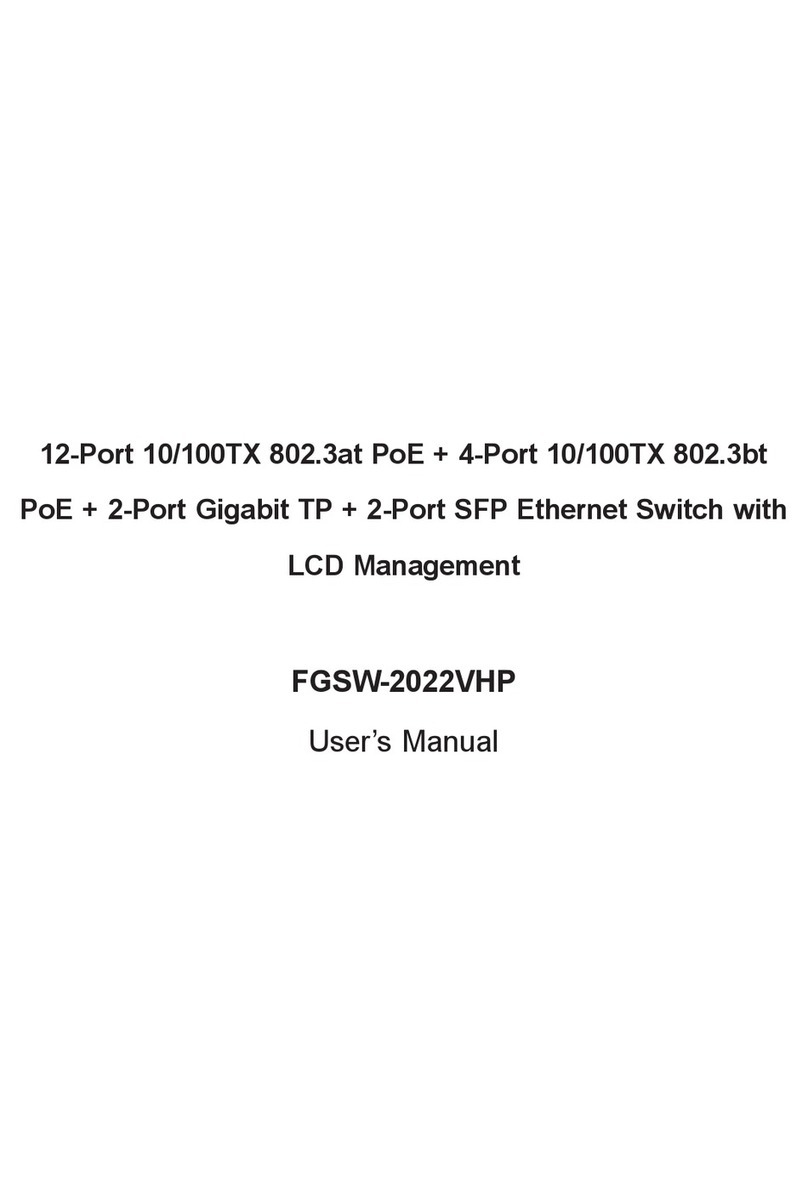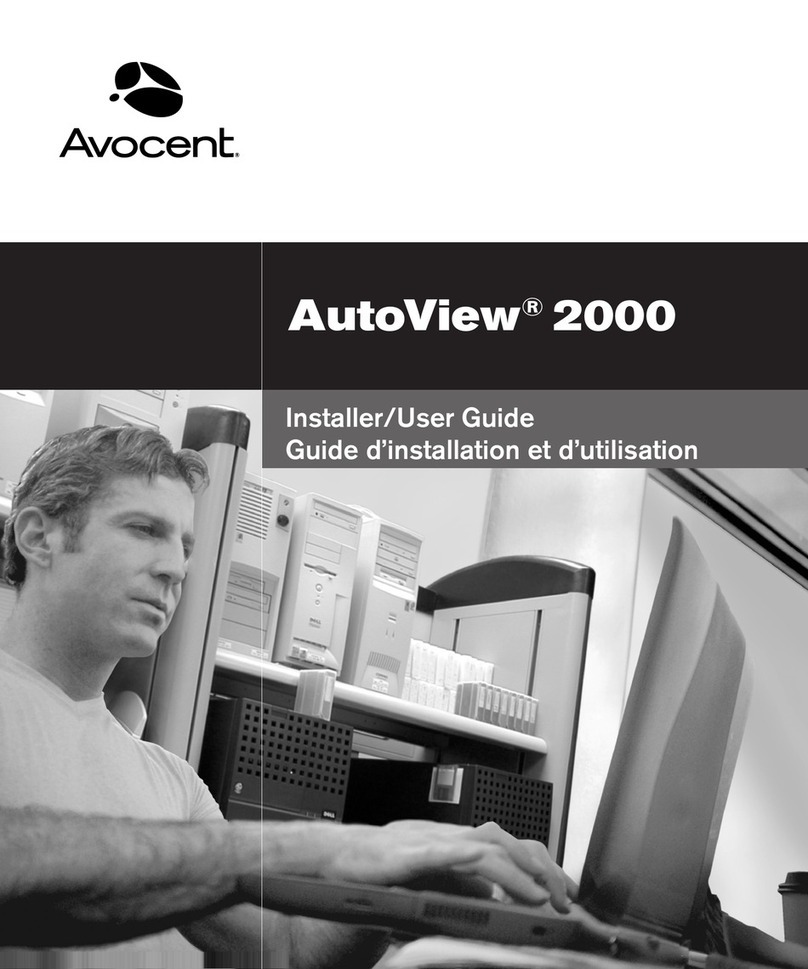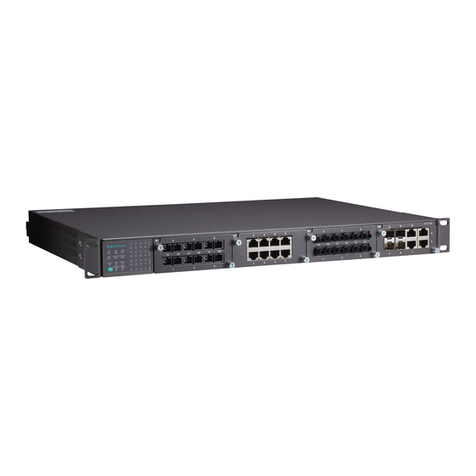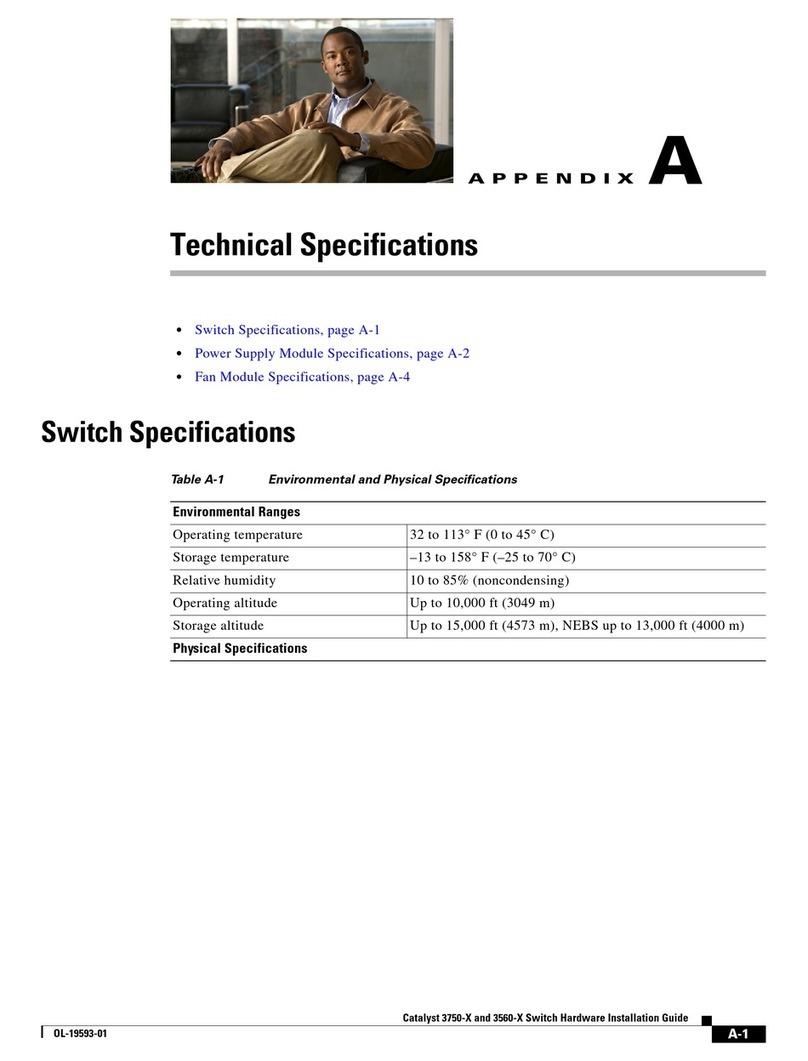
Safety Precautions
Fig. 1: Changing the actuating direction
TL4019
Safety,
Technology
& Innovation
Operating Instructions for TL4019 Series Safety Switches
Correct Use
Safety switches series TL4019 are electromagnetic
interlock devices with guard locking solenoid (separate
actuator). The actuator has a low coding level.
In combination with a separating safety guard and the
machine control, this safety component prevents the
safety guard from being opened while a dangerous
machine movement is being performed.
For the control system, this means that starting
commands which cause hazardous situations must
become active only when the safety guard is in
protective position and the guard locking is in locked
position.
The locked position of the guard locking must be
released only when the hazardous situation is no
longer present.
Closing and locking a safety guard must not cause
automatic starting of a dangerous machine function. A
separate start command must be issued. For
exceptions, refer to EN ISO 12100 or relevant
C-standards.
Before safety switches are used, a risk assessment must
be performed on the machine in accordance with
EN ISO 13849-1, Safety of machinery. Safety related
parts of control systems. General principles for design
EN ISO 12100, Safety of machinery – Risk
assessment and risk reduction.
IEC 62061, Safety of machinery – Functional safety of
safety-related electrical, electronic and programmable
electronic control systems.
Correct use includes compliance with the relevant
requirements for installation and operation, particularly
EN ISO 13849-1, Safety of machinery. Safety related
parts of control systems. General principles for design
EN ISO 14119, Safety of machinery. Interlocking
devices associated with guards. Principles for design
and selection
EN 60204-1, electrical equipment of machines
Important:
The user is responsible for safe integration of the device
in a safe overall system. For this purpose the overall
system must be validated, e.g. in accordance with EN
ISO 13849-2. If the simplified method according to section
6.3 EN ISO 13849-1:2015 is used for validation, the
Performance Level (PL) may be reduced if several
devices are connected one after the other.
Logical series connection of safe contacts is possible up
to PL d in certain circumstances. More information about
this is available in ISO TR 24119.
If a product data sheet is included with the product, the
information on the data sheet applies in case of
discrepancies with the operating instructions.
Safety switches fulfill a personal protection
function. Incorrect installation or tampering can
lead to severe injuries to personnel.
Safety components must not be bypassed
(bridging of contacts), turned away, removed or
otherwise rendered ineffective.
On this topic pay attention in particular to the
measures for reducing the possibility of bypassing
according to EN ISO 14119:2013, section 7.
The switching operation may only be triggered
by actuators specially provided for this
purpose which are permanently connected to
the protective guard.
Mounting, electrical connection and setup only
by authorized personnel.
Function
The safety switch permits the locking of movable
safety guards.
In the switch head there is a rotating cam that is
blocked/released by the guard locking pin. The
guard locking pin is moved on the insertion /
removal of the actuator and on the activation /
deactivation of the guard locking. During this
process the switching contacts are actuated.
If the cam is blocked, the actuator cannot be pulled
out of the switch head guard locking active.
Version TL4019-1, TL4019-3 and TL4019-5
(Guard locking by spring force)
The guard locking pin is held in the locked position by
spring force and unlocked by electromagnetic actuation.
The spring interlock guard locking functions in
accordance with the closed-circuit current principle. The
safety guard cannot be opened immediately in the event
of interruption of the solenoid power supply.
Versions TL4019-2 and TL4019-4
(Guard locking by solenoid force)
This type must be used only in special cases after
strict assessment of the accident risk! The safety
guard can be opened immediately in the event of
interruption of the solenoid power supply!
The guard locking pin is held in the locked position by
electromagnetic force and released by spring force. The
guard locking operates in accordance with the
open-circuit current principle.
Close safety guard and activate guard locking
The guard locking pin is released by insertion of the
actuator into the safety switch.
TL4019-1, TL4019-3 and TL4019-5: The guard
locking pin is moved to locked position by spring force.
TL4019-2 and TL4019-4: The guard locking pin is
moved to locked position when the solenoid operating
voltage is applied.
The safety contacts are closed.
Deactivate guard locking, open safety guard
TL40191/TL4019-5: The guard locking pin releases
the cam when the solenoid operating voltage is applied.
For switching function see Figure 3 column 2 Door
closed and not locked. The actuator can be
removed.
TL4019-2: The guard locking pin releases the cam
when the solenoid operating voltage is switched off.
For switching function see Figure 3 column 2 Door
closed and not locked.
The actuator can be removed.
TL4019-3 (with door monitoring contact): The guard
locking pin releases the cam when the solenoid operating
voltage is applied. For switching function see Figure 3
column 2 Door closed and not locked.
The actuator can be removed.
On the removal of the actuator, the door monitoring
contact switches and signals that the safety guard is
open (see Figure 3 column 3, Door open ).
TL4019-4 (with door monitoring contact): The guard
locking pin releases the cam when the solenoid operating
voltage is switched off.
For switching function see Figure 3 column 2 Door
closed and not locked.
The actuator can be removed.
On the removal of the actuator, the door monitoring
contact switches and signals that the safety guard is
open (see Figure 3 column 3, Door open).
Door request (TL4019-5)
When the actuator is in the locked state positively driven
contact 21-22 is opened by pulling the safety guard (6
mm actuator stroke) as a result of which a signal is
forwarded to the higher-order control system. Depending
on the control concept, the safety guard can be unlocked
automatically - when machine components which were
still running have stopped.
Mechanical Release
In the event of malfunctions, the guard locking can be deactivated
using the mechanical release, irrespective of the state of the solenoid
(see Figure 2).
Unscrew locking screw.
Using a screwdriver, turn the mechanical release by approx.
180° in the direction of the arrow.
The mechanical release or the mechanical key release must
be returned to its original position and sealed after use (for
example with sealing lacquer or using wire).
Please observe the supplied dimension drawing in the case of
key release.
Lock and Escape Release
On the actuation of the lock or the escape release, the actuator
must not be under tension.
The contacts 21-22 and 41-42 are opened and the switch
mechanically unlocked. The state of contacts 1x-1x and 3x-3x can
vary.
Mounting
Safety switches and actuators must not be used as an
end stop.
Mount the safety switch only in assembled condition!
Caution! Risk of burns due to high surface temperature at
ambient temperatures above 40°C! Protect switch against
touching by personnel or contact with inflammable material.
Assemble the safety switch so that
access to the switch is difficult for operating personnel
when the safety guard is open.
it is possible to operate the mechanical release and check
and replace the safety switch.
the escape release can be actuated from the hazard area.
Fit an additional end stop for the movable part of the safety
guard.
Insert the actuator in the actuating head.
Mount the safety switch positively.
Permanently connect the actuator to the safety guard so that
it cannot be detached, e.g. using the enclosed non-remova-
ble screws, rivets or welding.
Changing the Actuating Direction
Remove the screws from the actuating head.
Set the required direction.
Tighten the screws with a torque of 0.6 Nm.
Cover the unused actuating slot with the enclosed slot cover.
Protection Against Environmental Influences
A lasting and correct safety function requires that the
actuating head must be protected against the penetration
of foreign bodies such as swarf, sand, blasting shot etc.
Cover the actuating slot, the actuator and the rating plate
during painting work.
The safety switch is designed so that fault exclusions
for internal faults in accordance with EN ISO
13849-2:2013, Table A4, can be assumed.
